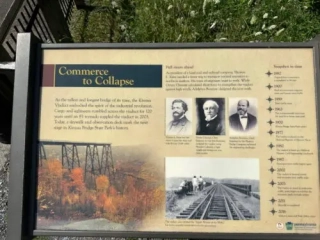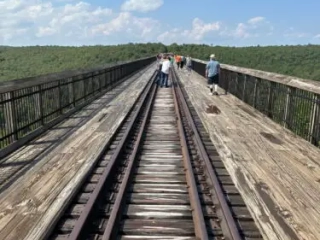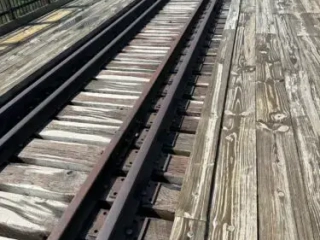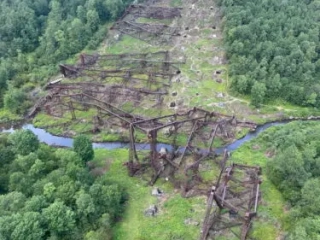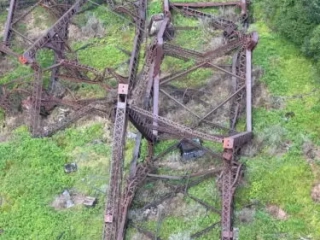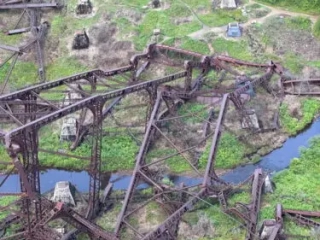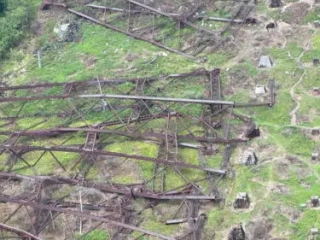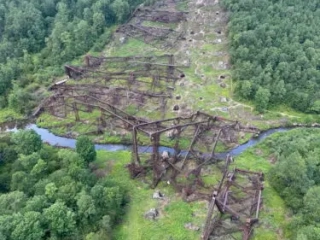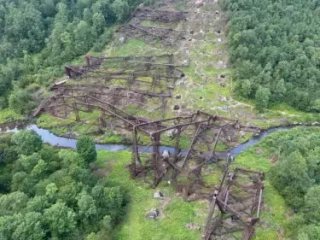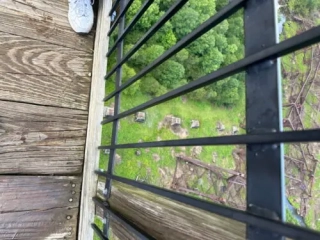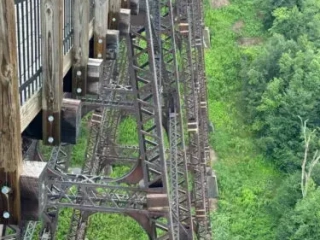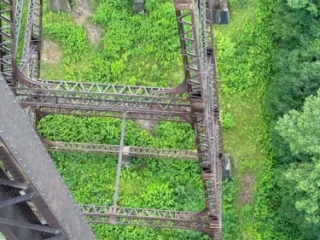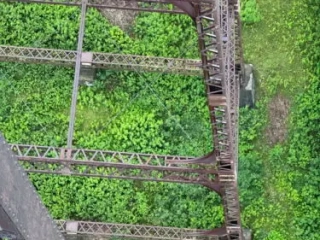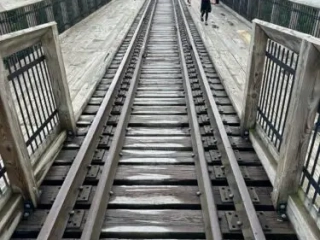The Viaduct, once the longest and tallest railroad structure at 2,053 feet long and 301 feet high. On Monday, July 21, 2003, at approximately 3:15 p.m., an F1 tornado (wind speed 73 – 112 mph) struck the side of Kinzua Viaduct. Eleven towers from the center of the bridge were torn from their concrete bases and thrown to the valley floor.
Construction of the iron viaduct began during 1881, starting with the placement of the stone piers. When completed during 1882, the Kinzua Bridge Viaduct was the highest railroad viaduct in the world. It was constructed as an alternative to laying an additional eight miles of track over rough terrain along the line leading to McKean County’s coal, timber, and oil lands.
Built of iron, the original viaduct was approximately 301 feet high, 2,053 feet long, and weighed 3,105,000 pounds. The towers were a patented design called Phoenix Columns. The columns were lighter in weight and had greater strength than cast iron columns of similar shape and size.
By 1900, it became necessary to rebuild the entire structure with steel to accommodate heavier trains. Later that year, about 100 to 150 men, working 10-hour shifts, completed the job in 105 days. The new steel viaduct had the same measurements, but now weighed 6,706,000 pounds.
Reinvented as a pedestrian walkway during 2011, visitors can stroll 600 feet out on the remaining support towers, peer miles out into the Kinzua Gorge, and gaze down through the partial glass platform at the end of the walkway.


